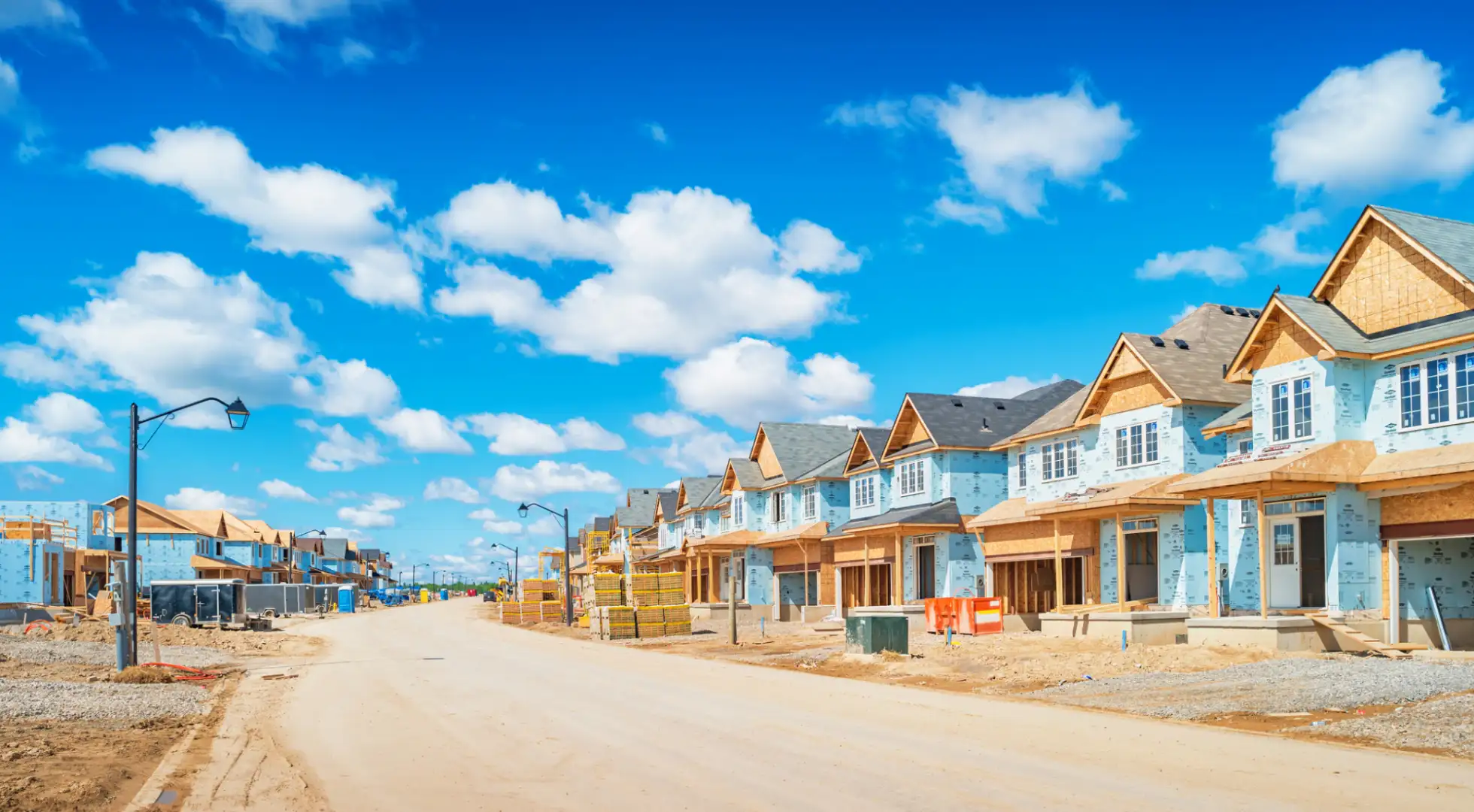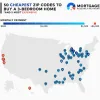Should You Accept A Builder Buydown or Negotiate a Lower Price?

If you’re considering a new construction house, you’ve probably already seen the massive incentives builders are offering these days.
DR Horton, one of America’s biggest builders, is advertising an FHA rate of 4.99% and conventional rates at 5.5% for certain communities at the time of this writing.
These aren’t ARMs or temporary buydowns but permanent, 30-year fixed mortgages. How can they do this when market rates are closer to 7%?
More importantly, should you accept these rates, and what, if anything, is the catch?
How Builders Offer Ultra-Low Rates
Home builders use profit from the home sale to “buy down” your rate. The rate reduction can be permanent or temporary.
Buying down a rate involves paying points and fees upfront in exchange for a lower rate.
That sum can be huge.
John Burns, a real estate research and consulting firm, estimates that permanently reducing a buyer’s rate by 1.5% on an FHA loan would cost between $19,700 and $34,200 for an entry-level home, depending on the home price.
A buydown on a 10% down conventional is almost as high: between $18,400 and $31,900.
Temporary buydowns are cheaper, but still spendy. For example, a 2/1 buydown reduces the rate by 2% the first year, 1% the second year, then reverts to the original rate. This would cost between $7,600 and $13,300 for an entry-level home, says John Burns.
By now you’ve probably figured out that the builder is not simply giving away upwards of $35,000 just for fun. They are trying to move homes. So, should you accept this offer?
Are Builder Buydowns a Good Deal?
On the surface, a builder buydown seems like a no-brainer.
And for some, it might be. A permanent buydown can help you qualify for the home when you otherwise could not.
But should someone take a rate buydown if they can qualify at a higher rate? It’s complicated.
For example, say you take a 30-year fixed rate at 6% when market rates are 7.5%. The home price is $500,000. According to John Burns, this costs the builder about five to six percent of the sales price, in this case, $30,000.
Now you have a 6% rate. In three years, mortgage rates drop to 5% at which point you refinance out of the mortgage that cost $30,000 in extra fees.
What if you had the opportunity to buy the house for $470,000 at 7.5% instead of $500,000 at 6%? Would you take it?
Home Price | $500,000 | $470,000 |
Loan amount (10% down) | $450,000 | $423,000 |
Interest Rate | 6.0% | 7.5% |
Principal & Interest Payment | $2,700 | $2,950 |
Strangely, the cheaper house costs $250 more per month. Still, those who could qualify at the higher rate might decide to gamble that rates will come down soon, opening up a refinance opportunity. After all, their loan balance is significantly lower than the person who spent $500,000.
However, it’s not that simple when buying a new construction home from a builder.
A Lower Price Might Not Be an Option
Home builders are protective of prices within a community. If the builder sells one home at a lower price, it could drag down prices on remaining units.
For example, homes in a particular neighborhood sell for $500,000. Then the builder lets one go at $470,000.
The appraiser must consider the $470,000 home when appraising future sales in the community. The next home may not appraise for $500,000.
But if the builder keeps the price at $500,000, offering $30,000 in incentives, it keeps prices elevated in the neighborhood. Those incentives could be countertops, fireplaces, or the incentive du jour, rate buydowns.
Wolf Street reported that home builder PulteGroup incentives averaged 6.3% of the home’s price, or a typical $35,000 on their average $549,000 home.
PulteGroup CEO Ryan Marshall said on the call, “What we’ve done is we’ve simply redistributed incentives that we’ve historically offered toward cabinets and countertops and things of that nature, we’ve redirected those to interest rate incentives.”
With high rates, about 80% to 85% of buyers are receiving mortgage rate incentives over other incentive types that have been historically more popular.
Expect your builder to sell you on re-allocated incentives, not a lower price, if you opt out of a rate buydown.
Should You Shop For “Used” Homes Instead?
If you’re the frugal type, it might bother you that an average of 6.3% of a new home’s price goes toward incentives. And this money might be wasted if you refinance or sell in a few years.
If builders won’t drop the price, do you shop the resale market instead?
You could, but individual home sellers aren’t as well capitalized as big, nationwide builders. They don’t have the builders’ profit margins or the ability to offer huge buydowns.
The typical seller is unlikely to drop their home price by 6% except in a distressed sale. The best you can hope for is a few thousand dollars towards closing costs.
Plus, existing homes don't come at a discount compared to new homes, at least nationally. According to the Census Bureau and HUD, the median new home price was $402,600 in November 2024 while the median home price for existing homes in the same month, says the National Association of Realtors, was $406,100.
A brand new home for around $400,000 with a 5% interest rate could be a better value than a “used” home at 6%.
So, while a builder’s incentives may seem wasteful, you still might end up with a better deal on a new home, all things considered.
Bottom Line: Builder Rate Buydowns Aren't All Bad
Builder buydowns are not a bad deal for the consumer. As the PulteGroup CEO said, incentives have always been there, but they are now reallocated to improve mortgage affordability.
Still, it could be worth asking the builder about all your incentive options. Perhaps there is an amenity you always wanted like a swimming pool or granite countertops that won't disappear if you refinance in six months.
Go into your negotiations knowing that mortgage rate buydowns aren’t free. It’s your $30,000. Use it wisely.







